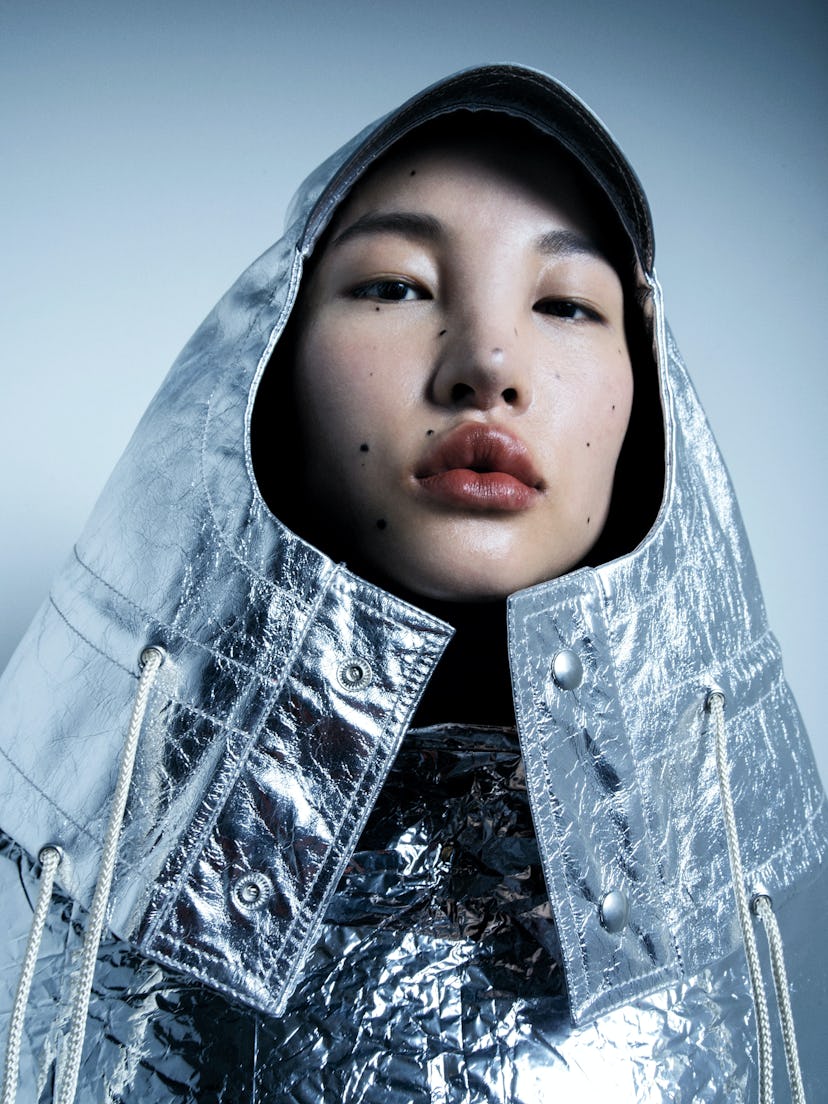When it comes to airplane travel, there are myriad issues to consider, from the trivial (will you purchase mini pretzels or a bag of peanuts to snack on during the flight?), to more complex (the potential for lost baggage). But there’s one more thing to add to the list—and it relates to your skin. “When you combine the high altitude, increased UV exposure, and recirculated air of an airplane, it can be a recipe for complexion disaster,” says board-certified dermatologist Dr. Geeta Yadav. Not to mention, airplanes have significantly lower humidity levels, which is the driving factor behind skin sensitivity. The good news? You don’t have to succumb to dry, flaky skin in the name of a good travel selfie. Below, find out how to take care of your complexion before, during, and after your flight.
Before Your Flight
Your preflight checklist should include more than just your boarding pass and carry-on—how you prep your skin beforehand is just as important. For one, Yadav recommends removing all of your makeup before a flight. “You’ll already be submitting your skin to harsh conditions when flying—adding makeup into the mix just makes it harder for your skin to maintain a healthy balance,” she says. To avoid landing at your destination with clogged pores, try double cleansing—that is, using a cleansing balm to remove your makeup followed by a gentle, soap-free cleanser afterward.
Flying during the day? SPF is just as important while you’re in the air as it is while on land. In fact, studies show that UV radiation levels are twice as high at 30,000 miles (the altitude of most commercial flights) than they are at ground level. Needless to say, don’t skimp on the SPF. “Though you’re unlikely to get a sunburn on a plane, airplane windshields typically only block UVB and often allow a significant amount of UVA transmission through the glass,” Yadav notes. “I would absolutely recommend taking precautions by applying sunscreen with an SPF level of 30 or higher for a flight.” Besides wearing SPF on your face, Yadav also recommends choosing a hand cream and a lip balm that contains SPF, as well.
As far as your diet goes, it can play a role in how your skin will behave during your flight. “The air on planes has reduced humidity, which causes discomfort by stripping skin of its natural moisture,” says Yadav, who recommends drinking plenty of water preflight to keep your skin hydrated from the inside out. She also says to avoid consuming overly salty foods before flying to avoid retaining water, which can cause facial puffiness. Too bad—those mini pretzels and peanuts were looking really good.
During Your Flight
Your in-flight skincare routine should be focused on combating the stress caused by high altitudes and drier air. To make up for the drying effects of flying, Yadav says to keep sheet masks handy—specifically, biocellulose masks. These products have the best chance of pushing nourishing ingredients into your skin versus paper or fiber sheet masks, which are susceptible to being dried out due to the dry air on a plane.
As for the rest of your skincare routine, look for serums and moisturizers that contain humectants (like hyaluronic acid, sodium hyaluronate, and sodium PCA) and emollients (like shea butter and squalane). “These will draw water from the air and seal it into the skin,” Yadav says. Layering on products with these ingredients will ensure your skin maintains hydration throughout the flight—especially if you’re flying a red eye.
Finally, consider the location of your seat—surprisingly, this can have an effect on your skin. Yadav says to book an aisle seat so that you can get up occasionally and stretch your legs. “Moving around—or wearing compression socks—will help promote blood circulation and stave off puffiness,” she says. Also, if you’re going somewhere important immediately after landing, avoid consuming alcohol while in-flight, as this can also cause puffiness.
After Your Flight
Your post-flight skincare regimen should be centered around two things: warding off breakouts and reintroducing any lost moisture back into the skin. The first step? Washing your face. “All of that recirculated air (and more importantly, the recirculated microbes) can build up on your skin during a flight,” explains Yadav. “It’s always a good idea to immediately cleanse your skin (even if you can only manage a face wipe) after disembarking to help prevent breakouts.” If you have acne-prone skin or you find that air travel triggers breakouts, pack a face cleanser that contains salicylic acid in your carry-on so that you can cleanse right after landing.
While you may be tempted to take a hot shower after a long flight to help relieve travel stress, Yadav warns against this, stating that hot water will just strip your skin even more. Instead, opt for lukewarm water and be sure to lather on the moisturizer (on both your face and body) once you get out. Hydrating ingredients to look for in your products include shea butter, cocoa butter, hyaluronic acid, and glycerin.
